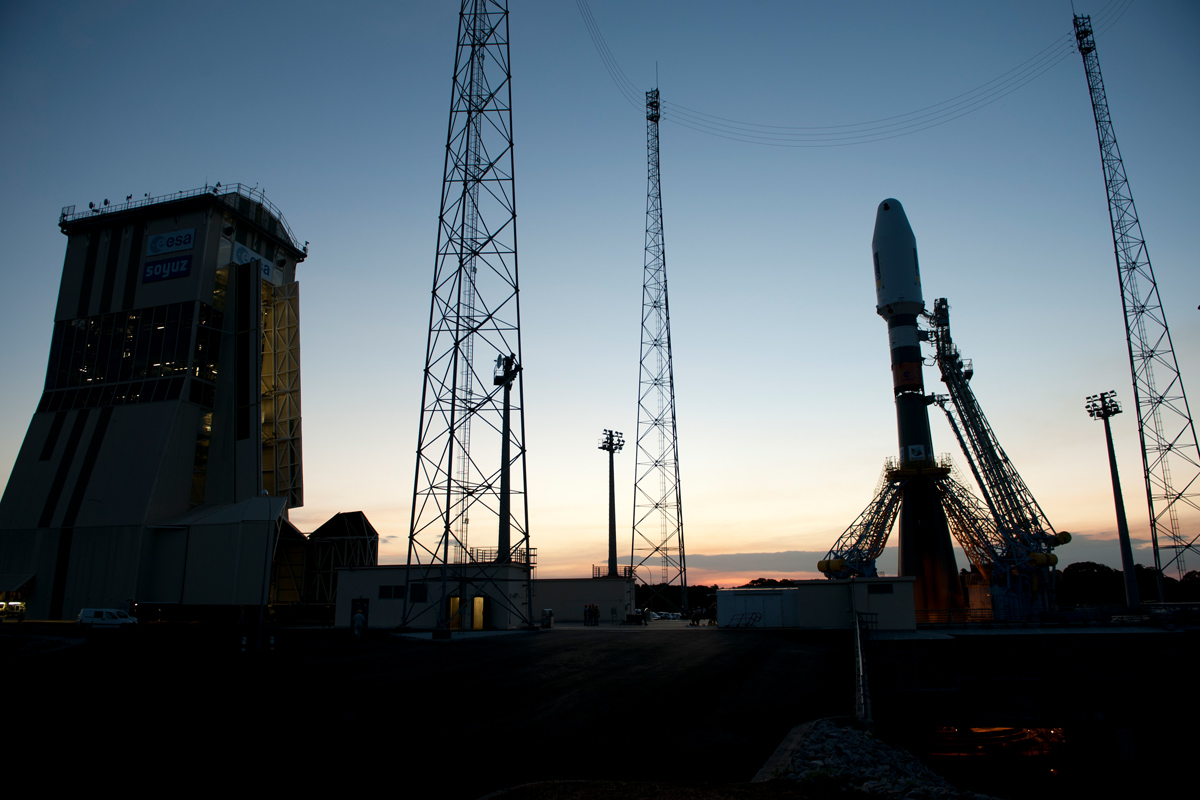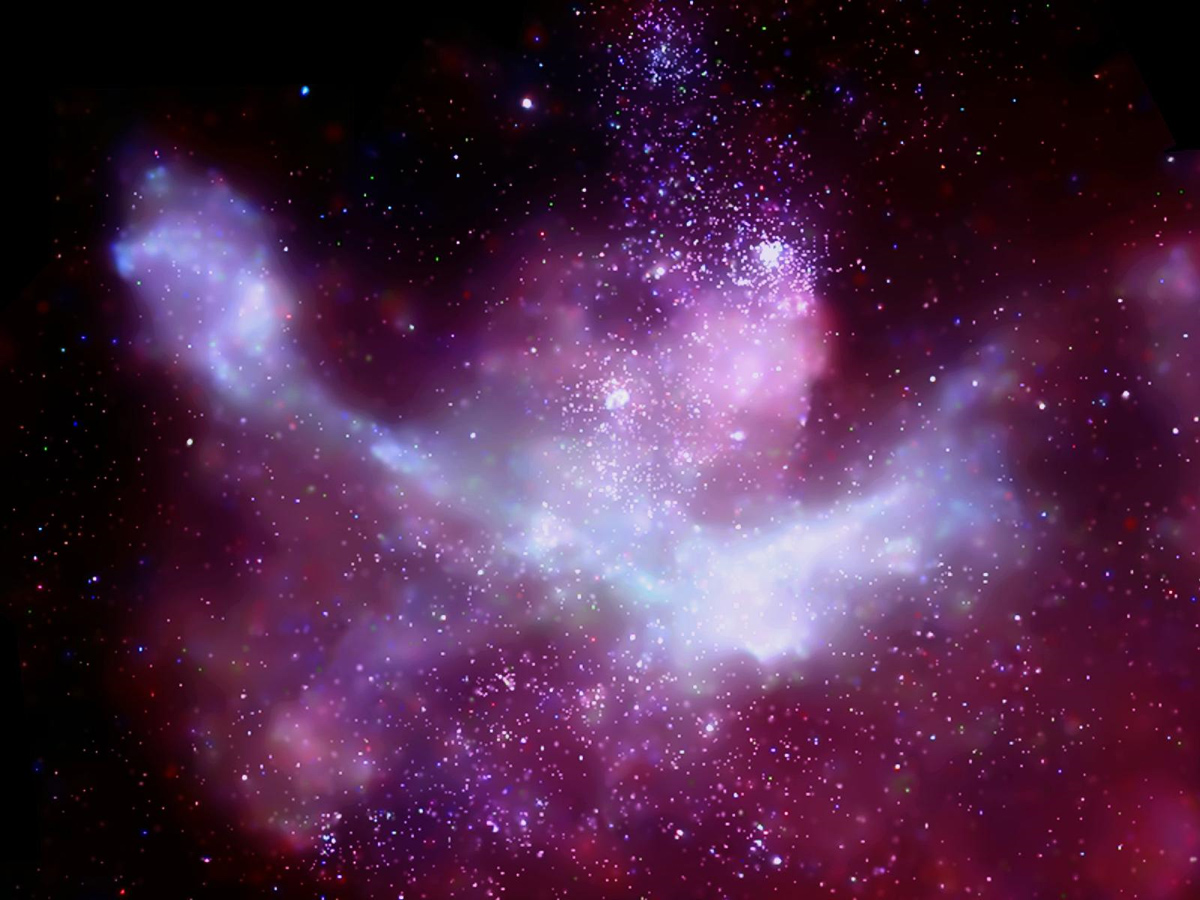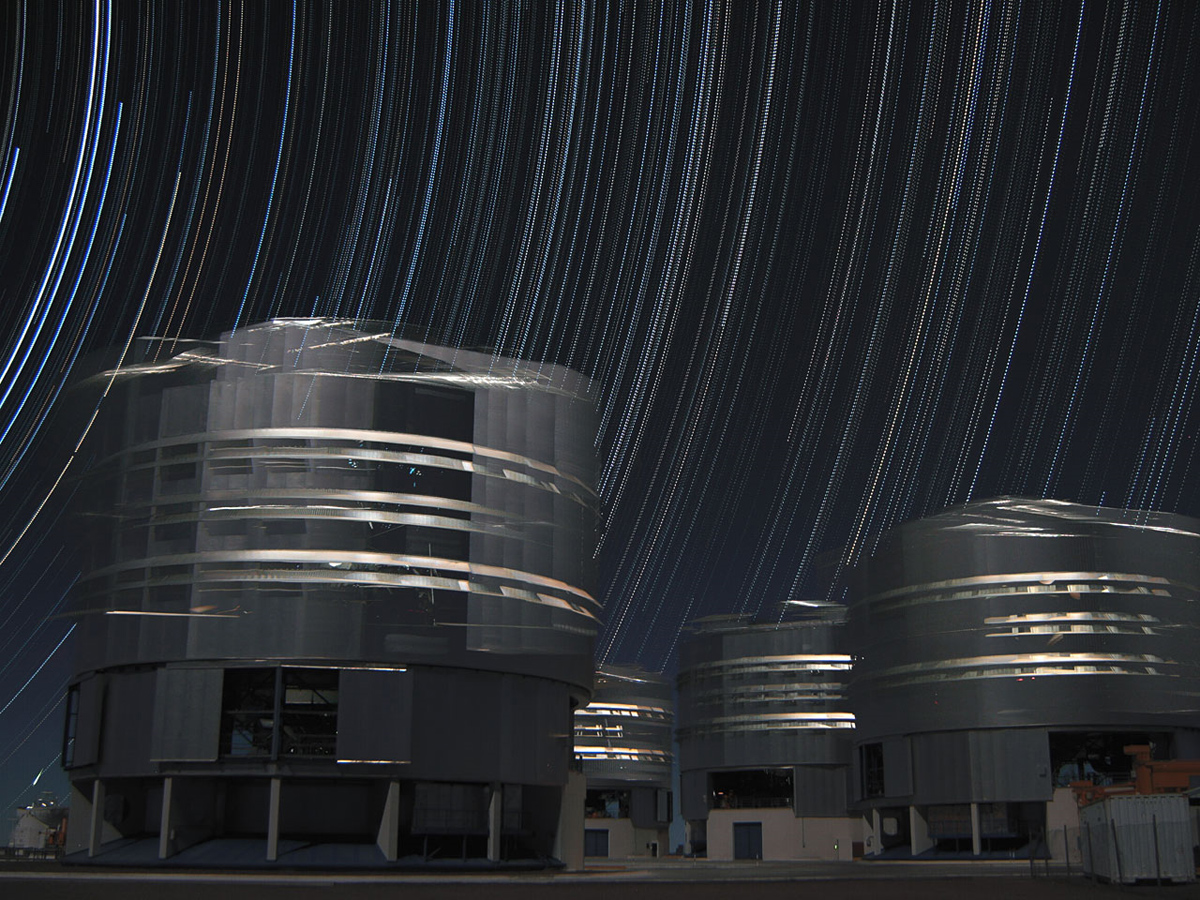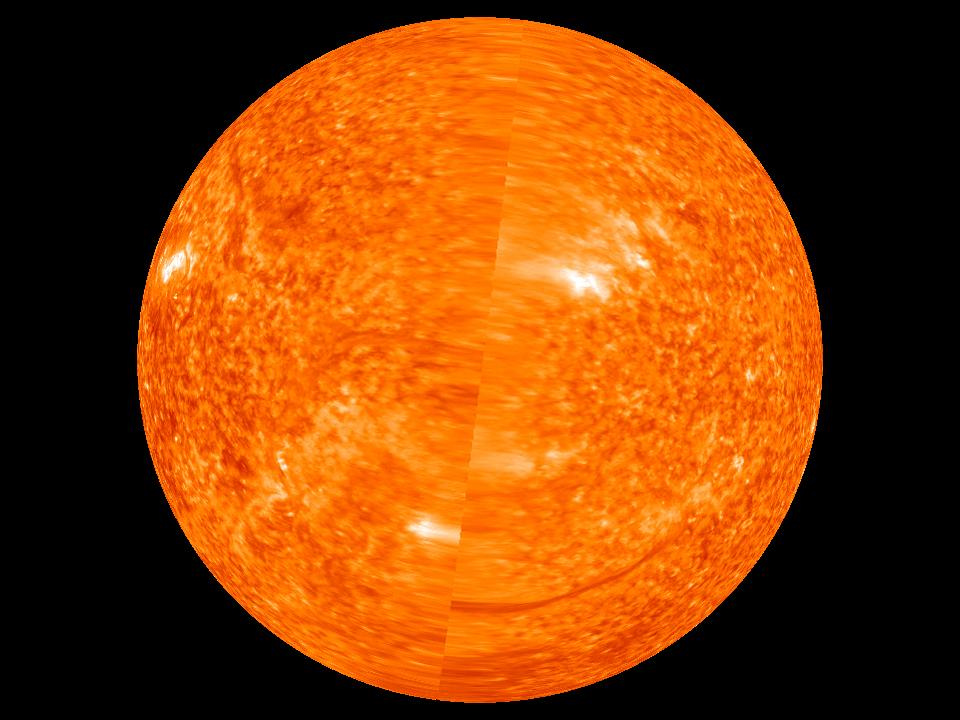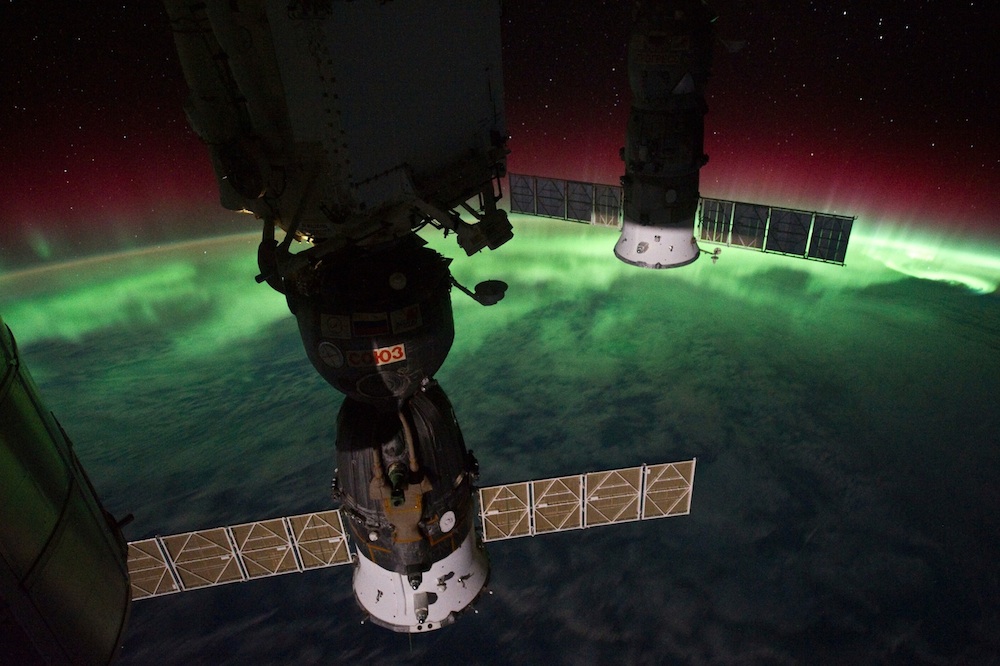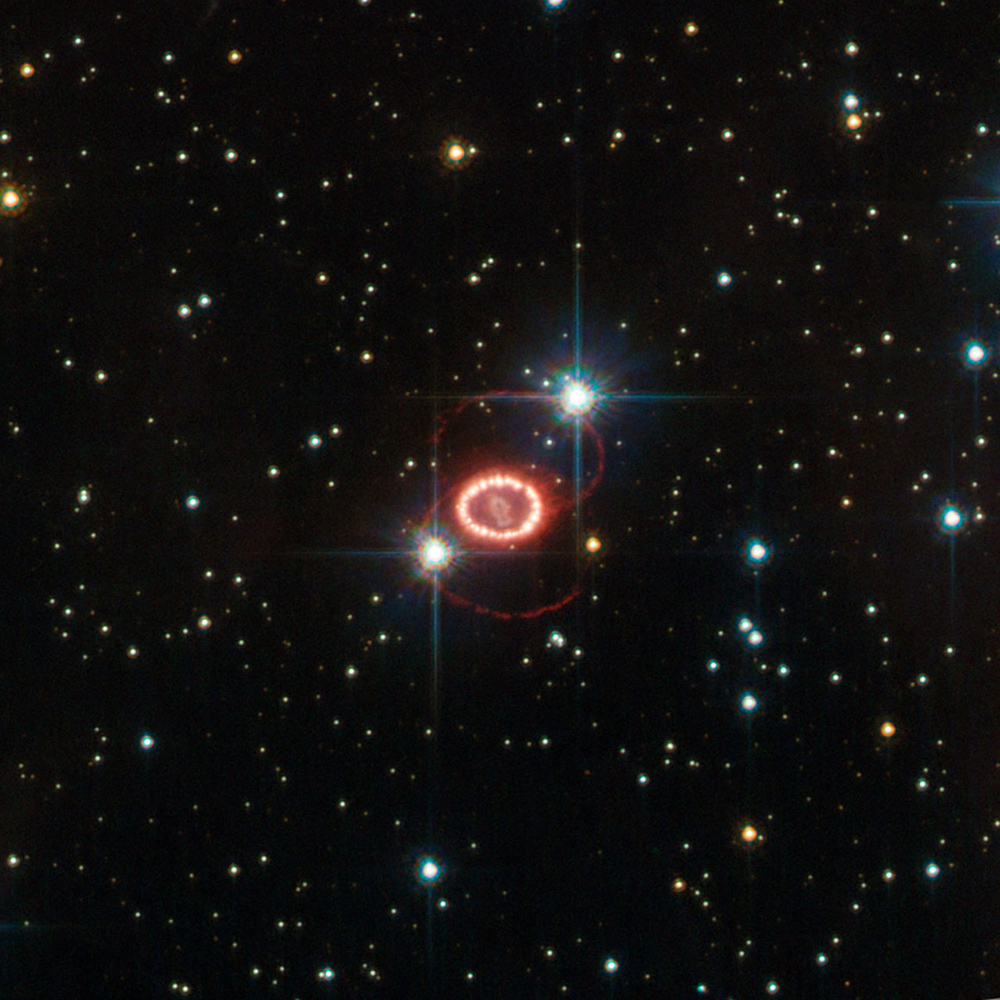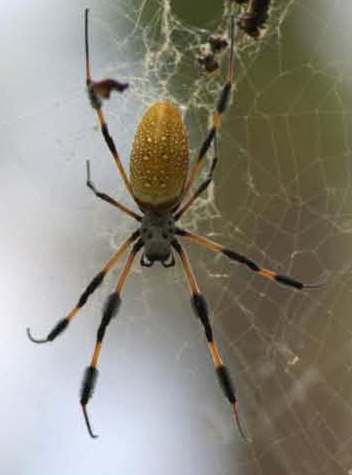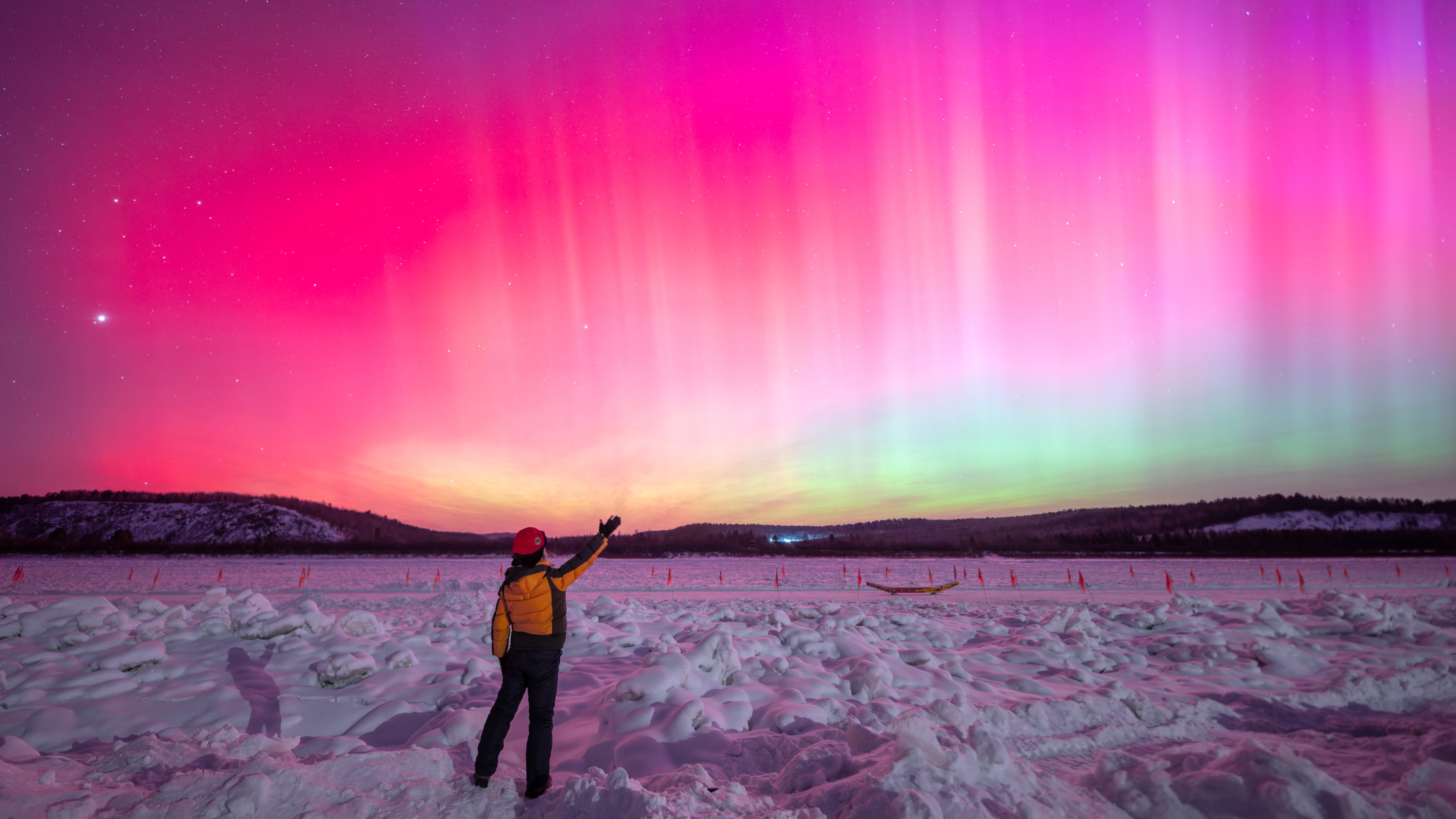Image of the Day: October 2011
Ready to Go
Tuesday, October 18, 2011: Soyuz VS01 will mark the first launch of a Russian Soyuz ST-B rocket from Europe's spaceport in French Guiana. The space vehicle moved into position on October 14, 2011. The vehicle rolled out horizontally on its erector from the preparation building to the launch zone, then raised into the vertical position. Technicians then added the "upper composite," comprising the Fregat upper stage, payload and fairing, onto the vehicle from above. Soyuz VS01 will launch on 20 October 2011, carrying the first two satellites of Europe's Galileo navigation system into orbit.
— Tom Chao
Mr. Self Destruct
Wednesday, October 19, 2011: The Carina Nebula, a star-forming region in the Sagittarius-Carina arm of the Milky Way, lies 7,500 light years from Earth. The Chandra X-Ray Observatory has detected more than 14,000 stars in the region. Chandra's X-ray vision provides strong evidence that massive stars have self-destructed in this nearby star-forming region. Researchers have observed a deficit of bright X-ray sources. Also, the detection of six possible neutron stars, the dense cores often left behind after stars explode in supernovas, gives additional evidence of increasing supernova activity in Carina. Previous observations had only detected one neutron star there.
— Tom Chao
On a Bender
Thursday, October 20, 2011: Galaxy cluster MACS J1206.2-0847 (aka MACS 1206) lies 4.5 billion light-years from Earth. The distorted shapes of distant galaxies seen here result from the gravitational pull of an invisible material called dark matter bending light.
— Tom Chao
Underneath It All
Friday, October 21, 2011: NASA's Mars Science Laboratory (MSL) mission aeroshell hangs over the heads of technicians in the Payload Hazardous Servicing Facility at Kennedy Space Center in Florida. The aeroshell, which has been mated to the cruise stage, contains the newest Mars rover, Curiosity, comparable in size to a compact car. (Note Curiosity's black wheels protruding from the underside of the aeroshell.) Curiosity will search Mars for evidence that it once possessed environments favorable to microbial life. NASA plans to launch MSL aboard a Atlas V rocket on November 25, 2011, from Cape Canaveral Air Force Station in Florida.
— Tom Chao
All the Stars Are Spinning—They're Spinning Around in Heaven Above
Monday, October 24, 2011: Stars appear to trail through the night sky above ESO’s Very Large Telescope (VLT) array on Cerro Paranal in Chile. Farid Char, a student at Chile’s Universidad Católica del Norte, created the image from 450 individual 20-second exposures taken over 2-1/2 hours, creating the dotted star trails that appear to circle the southern celestial pole. The Unit Telescopes also seem to whirl as they rotate to observe different subjects. Even a shooting star passes by, seen as a small trail above the Auxiliary Telescope in the bottom left of the image.
— Tom Chao
We've Got Five Years
Tuesday, October 25, 2011: Happy birthday, STEREO! NASA's twin spacecraft of the Solar TErrestrial RElations Observatory (STEREO) launched five years ago on October 25, 2006. On February 6, 2011, the two spacecraft had moved into positions almost exactly on opposite sides of the sun, allowing them to see the entire sun at once. STEREO captured this picture, the first complete image of the solar far side, on June 1, 2011. Solar north lies at the top of the photograph.
— Tom Chao
On and On and On and On Aurora
Wednesday, October 26, 2011: Astronaut Ron Garan tweeted this photo by fellow spaceflyer Mike Fossum (@astro_aggie) on October 5, 2011, showing auroral glow over Earth. He wrote: "@Astro_Aggie is changing the way us earthlings view our planet. Great snap Mike! #ISS #NASA."
— Tom Chao
Breaking space news, the latest updates on rocket launches, skywatching events and more!
Hit Me with Your Best Shot
Thursday, October 27, 2011: Supernova SN 1987A, one of the brightest stellar explosions visible, belongs to the Large Magellanic Cloud, a nearby galaxy about 168 000 light-years away. This image of a long-time subject of the Hubble Space Telescope, taken from the telescope's data archive, may be the best ever of this object.
— Tom Chao
I'm Not Perfect, but I'm Perfect for You
Friday, October 27, 2011: Spiral galaxy Messier 96 doesn't possess the classic appearance of a spiral galaxy: It has a core displaced from the center, gas and dust distributed asymmetrically and ill-defined spiral arms. Messier 96, also known as NGC 3368, lies in the constellation of Leo (The Lion). This image was processed by ESO using the observational data found by Oleg Maliy from Ukraine, who participated in ESO's Hidden Treasures 2010 astrophotography competition using astronomical data obtained with professional telescopes.
— Tom Chao
Spider from Mars?
Monday, October 31, 2011: Happy Halloween from SPACE.com! This spider, a female Nephila clavipes (golden orb spider), shown here in her web, is of the same type as two spiders who flew to the International Space Station in May 2011. Those two arachnids, dubbed Gladys and Esmeralda by astronaut Cady Coleman, were part of a scientific investigation called Commercial Generic Bioprocessing Apparatus Science Insert-05, or CSI-05, followed by students the world over. Intriguingly, the golden orb spider usually spins a three dimensional, asymmetric web on Earth, but in space they spin more circular webs.
— Tom Chao

Space.com is the premier source of space exploration, innovation and astronomy news, chronicling (and celebrating) humanity's ongoing expansion across the final frontier. Originally founded in 1999, Space.com is, and always has been, the passion of writers and editors who are space fans and also trained journalists. Our current news team consists of Editor-in-Chief Tariq Malik; Editor Hanneke Weitering, Senior Space Writer Mike Wall; Senior Writer Meghan Bartels; Senior Writer Chelsea Gohd, Senior Writer Tereza Pultarova and Staff Writer Alexander Cox, focusing on e-commerce. Senior Producer Steve Spaleta oversees our space videos, with Diana Whitcroft as our Social Media Editor.
